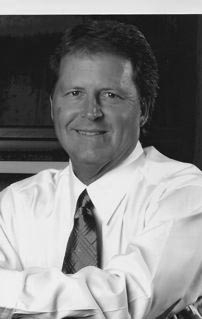Opinion: Combs' wind energy report lacking facts

Paul Sadler is the executive director of the Wind Coalition, and a former Texas state legislator. He responds to the recent comptroller report which he believes did not accurately represent the job creation potential of wind energy.
If we are to believe a recent report from the comptroller’s office (“An Analysis of Texas Economic Development Incentives 2010”), wind energy creates only 500 jobs in Texas.
And if we are to believe another claim by the comptroller’s office, a weekend of Formula One racing at a taxpayer-subsidized track in Austin will bring 5,000 jobs. In other words, even though Texas is the sixth-largest producer of wind energy in the world, with enough installed capacity to power 2.5 million homes, we are supposed to believe it produces one-tenth the number of jobs as expensive cars driving along a track.
Texas Comptroller Susan Combs has indicated she does not believe the statute authorizing her report on economic development incentives allows her to look at the total economic impact of wind energy as she did for a Formula One race.
So, let’s introduce some facts missing from the comptroller’s report.
Wind energy not only creates jobs on wind farms, it creates headquarters jobs in cities like Austin and Houston. Wind energy also creates manufacturing jobs, such as those in Dallas-Fort Worth. Wind energy creates supplier jobs for companies that specialize in producing technical parts in virtually every part of the state.
And wind energy produces jobs in fields like transportation – have you ever seen a massive turbine blade being driven from one of our ports west? – as well as thousands of construction jobs.
In fact, Texas economist Ray Perryman says wind is responsible for 10,000 jobs in Texas, and doesn’t even count the peripheral job impact in that calculation.
If the comptroller is going to include taxis in her job count for a weekend racing event, then she also should tally land surveyors, contract engineers, wildlife biologists, and landowner attorneys, as well as restaurateurs and hotel owners who see an influx of business in their local communities when wind farms are being built. And there will be even more jobs to count once the state finishes the transmission project authorized by the Legislature under Competitive Renewable Energy Zones.
Why is this important beyond a semantics debate? Because the comptroller is recommending a major overhaul of a tax incentive that local communities may offer wind energy companies and certain manaufacturing interests based on a very limited view of job creation. Her calculation of wind jobs per tax incentive is missing 95 percent of the jobs we create!
These incentives – known as 313 agreements for the chapter of the tax code that authorizes them – were intended not only to bring jobs to Texas, but also capital investment.
Wind energy companies have invested more than $7 billion in large capital projects throughout Texas, generating millions of dollars in revenue for landowners and local school districts as well as growing the local tax base. When you consider there were barely any turbines on Texas soil at the turn of this century, this is a remarkable success story.
Some opponents of wind energy are quick to argue that CREZ amounts to a subsidy of wind. Nonsense.
First, no one calls the other $4 billion in proposed transmission lines a subsidy for coal, gas and nuclear generation. Nor have we ever referred to the 37,000 miles of transmission lines already built for coal, gas or nuclear as a subsidy for those industries. Plus, the CREZ lines will be used not only by wind generators, but all forms of electricity generation.
Second, subsidies for fossil fuel generators are massive compared to wind. In fact, in a report authored in 2007, Comptroller Combs includes the following fact in her findings: 99.6 percent of energy subsidies in Texas go to fossil fuel generation.
Want to discuss subsidies? Fine, let’s just be sure to put them all on the table, and not single out one industry. Want to discuss jobs tied to energy generation? Sure, but let’s discuss real numbers.
Restricting the definition of job creation for wind to only those jobs created on wind farms is like saying oil and gas creates no jobs in Houston because only the guys monitoring the pump jacks in the oil field count. Again, I say nonsense. That just would not be fair.
People around the world are looking at Texas and asking just how we went from less than 100 megawatts of wind generation to 10,000 megawatts of installed capacity in only a decade.
I recently returned from Morocco where I was invited to explain the genesis of this phenomenal economic success story.
I wish our West Texas comptroller could see what the rest of the world sees in West Texas: an economic miracle blowing in the wind.
In the worst recession in 70 years, we need all the investment we can attract.
Paul Sadler has given us permission to reprint this article as it appeared in the Amarillo Globe News this weekend.